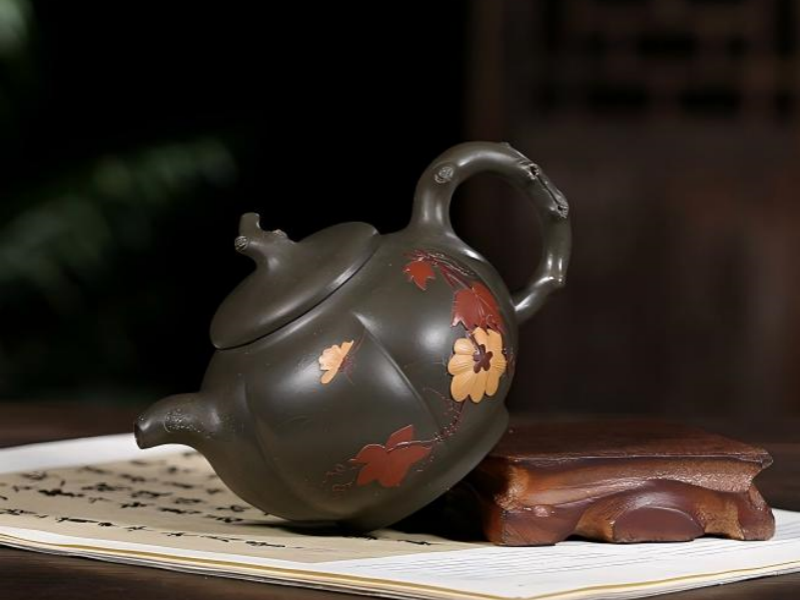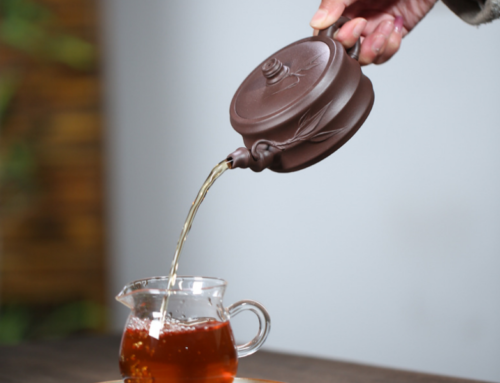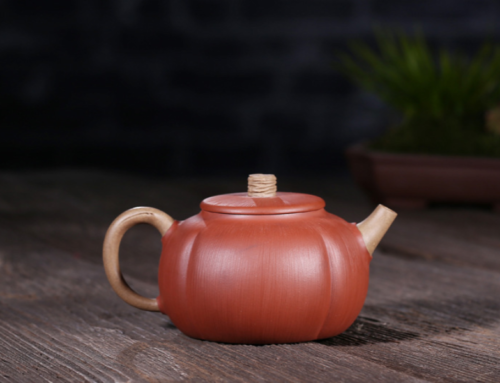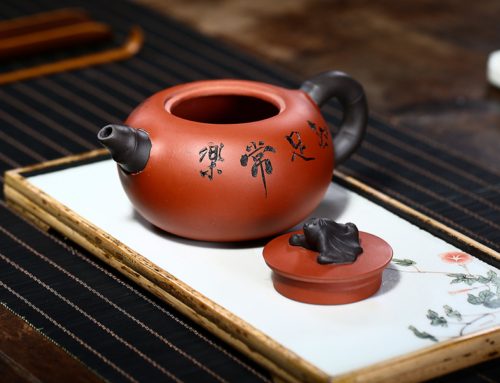Zisha Clay Teapots: A Guide to Various Shapes, Styles and Colors
Introduction
Zisha teapots, aka Yixing teapots, are regarded as one of the greatest tributes to traditional Chinese tea culture. Hailing from the area surrounding YiXing, Jiangsu Province, the clay teapots have stood the test of time and captivated tea drinkers for hundreds of years. But what exactly makes them so special, and why is it that collectors, tea lovers and even museum curators the world over put so much stock into these acclaimed pots? The answer is a fascinating combination of art, tradition and science. From the more curves Xi Shi to the more lines Shi Piao, Zisha teapots have different shapes, styles, and colours. The shape of the teapot also affects the process of tea brewing and tea taste. Many people choose Zisha teapot based on whether they like the design as they would pick a piece of art work. In this comprehensive guide, Types of Zisha Teapots: Exploring Shapes, Styles, and Colors of Zisha Pottery, you’ll learn some of the rich history, lore, and practical tips surrounding this storied teapot tradition. If you’re ready to buy your first, or next, Zisha pot, this article is designed for you. Even if you’re just a tea enthusiast who loves Chinese tea culture or want to learn more about this classic teapot variety, you’ll gain a deeper appreciation of what makes Zisha pottery so fascinating to so many people. You’ll learn why Zisha clay is special, learn the stories behind each of the classic teapot shapes, understand key style differences, and gain a sense of why the colors of Zisha teapots are so famous. Along the way, you’ll also learn tips on how to identifying real Zisha teapots, tips on caring for your teapot collection, and engage in the rich cultural background of these legendary brewing vessels. Quick Overview: • The name “Zisha” means “purple sand” in Chinese, referring to the natural color of the clay • The best Zisha teapots are handmade, rather than molded • Shape, style, and color all affect both tea flavor and teapot aging • True Zisha pots often rise in value the more they are used and the older they are. Let our journey with Zisha teapots begin, where every little detail is a statement; and every brew will be a celebration. “A Zisha teapot is not just a vessel; it is the soul of the tea ceremony, breathing life into every leaf.” — Traditional Yixing saying Now, let’s uncover what sets Zisha pottery apart from every other kind of teaware.
Table: Key Features of Zisha Teapots
| Feature | Description | Impact on Tea |
|---|---|---|
| Clay Type | 紫泥、红泥或段泥紫砂 | 改变香气/风味 |
| Shape | 经典和自然灵感造型 | 影响冲泡/倾倒 |
| Style | 传统、简约或华丽 | 表达个性 |
| Color | 从深紫到金黄不等 | 表明粘土矿物质 |
| Craftsmanship | 手工制作与工厂制造 | 影响价值 |
| Age/Patina | 茶壶表面随使用而改善 | 增强美感/风味 |
Data Source: Evaluation based on The American Ceramic Society’s “Yixing Teapots: Materials, Forms, and Function” (https://ceramics.org/ceramic-type) and technical documentation from The Pottery Studio, “Yixing Teapot Features and Impact” (https://www.potterystudio.com/materials/yixing.html).
Data Source: International Ceramic Artists Network (ICAN), “How Teapot Features Influence Tea: Clay, Shape, Age, and More” (https://ceramicartsnetwork.org/daily/article/How-Yixing-Teapots-Impact-Tea).
Zisha Pottery is the perfect cohesiveness of material and craftmanship. Zisha pottery stands for a kind of clay to manufacture Zisha teapots. Zisha pottery teawares are usually made with purple clay, red clay and green clay. The purple clay, or Yixing clay often exists in mountain rocks, mainly around Dingzhang mountain, huanglong mountain and other places of Dingshu Town, Yixing city, Jiangsu, China. It is a mixture of kaolin, quartz and mica with high content of iron element. Japaneseculture considered Zisha clay as medium of serving water and food in their modern lifestyle. As a form of rare clay, Zisha, is a type of rough china; its main mineral contents are kaolin, quartz, mica and haematite, with minute amounts of other chemical elements and minerals. Yixing clay, the natural clay that is used to make Zisha pots, comes from only one small region of the chinese province of Jiangsu, and more specifically, at the western side of Lake Tai. It is unique and completely special, motivating the production of fake Yixing pots made with “imitation clay”. Yixing clay – or Zisha (lit. “purple sand”) clay – is the main raw material for Yixing pottery making. It is a kind of sandy clay without being refined and washed. The ceramicists mostly use it to make teapots and other relevant tea wares. But the story doesn’t stop at the raw material. Craftsmanship is another pillar of Zisha’s reputation. Traditionally, artisans shape each teapot by hand, using wooden tools and decades-old techniques passed down through generations. The artist’s touch can be seen in every detail—from the snug fit of the lid to the elegant curve of the handle. In fact, a well-made Zisha teapot rarely drips, pours smoothly, and feels perfectly balanced in your hand. Case Study: In a 2022 comparison, expert tea tasters brewed the same high-mountain oolong in both a porcelain and a Zisha teapot. The Zisha pot produced a richer aroma and a smoother, more complex flavor profile. The difference was attributed to the porous nature of the clay and its ability to enhance the tea’s natural oils.
“A Yixing teapot is like a good friend: the longer you know it, the more it gives back.” — Chinese tea proverb This blend of unique clay and dedicated craftsmanship makes Zisha teapots much more than just brewing vessels—they’re living testaments to the art and science of tea. Now, let’s dive into the fascinating diversity of Zisha teapot shapes and what they mean for your tea ritual.
World of Zisha teapots is an eye-popping abundance of shapes and dazzling creativity. Every shape of the teapots is not just a kind of aesthetic, but these shapes influence in leaves unfurling and heat conduction and aroma reactivity. When you choose to use types of Zisha teapots, you will understand these shapes and can help you decide which type of Zisha teapots you should use.
Why form matters
Let’s take a look into the known Yixing teapot types, and what makes them different:

Most Popular Zisha Teapot Style
Shi Piao. The Shi Piao (Stone Ladle) teapot. The Shi Piao teapot is essentially a translation of the Chinese 石 (shi 石) 瓢 (piao 瓢) shape. Indeed, the Shi Piao teapot resembles a stone ladle, with its blocky, triangular body, and flat and stable resting surface. The Shi Piao teapot’s wide opening makes it easy to clean, and compatible with rolled teas that like to expand, such as oolong. Bold, commanding, and a collector favorite, Shi Piao’s striking, sharp lines evoke their own distinct aura; the design of the Shi Piao makes quick, even heating effortless, imparting a bold, expressive cup.
Xi Shi
Xi Shi Named after one of China’s legendary four beauties, the Xi Shi teapot resembles the roundness of a maiden’s face. Its soft, rounded body and gentle curves bring with them more than just visual pleasure, they allow for the leaves to tumble freely, releasing layer after layer of aroma and flavour. The ergonomic handle and short spout complete the package, making for a pleasantly smooth and controlled pour. Shui Ping (Water Level) “Shui ping (水平)” means “water level”. A classic Yixing teapot design, this shape is prized for its symmetry and balance. The flat top of the lid aligns with the rim of the pot to create a tight fitting seal. Many tea masters use shui ping pots for gongfu tea ceremonies, most often with relatively gentle tea like green and oolong teas. Pouring tea from a shui ping feels like a breeze. Fang Gu (Archaic Vessel) Fang gu teapots are inspired by ancient Chinese bronze ceremonial wares. They feature a trumpet-shaped mouth and sturdy, cylindrical body. This shape hearkens back to traditional forms, while serving as a practical, versatile vessel for a range of teas. The heavier walls help to conserve heat, making fang gu pots good for aged pu’er. Nature-Inspired Shapes: Lotus, Bamboo, Dragon Egg Zisha potters take great inspiration from nature. Lotus and bamboo designs evoke purity and perseverance, amongst other virtues. The Dragon Egg shape (also known as dan gu or “egg shaped vessel”) hints at transformation and new beginnings with its ovoid body and pointed lid. These designs blend artistry with subtle references to Chinese philosophy and folklore.
Table: Comparison of Popular Zisha Teapot Shapes
| Shape | Look & Feel | Best For | Unique Feature |
|---|---|---|---|
| Shi Piao | Triangular, bold | Oolong, black teas | Wide base, quick heat up |
| Xi Shi | Round, elegant | Green, scented teas | Gentle curves, easy pour |
| Shui Ping | Symmetrical, balanced | Gongfu, oolong | Snug lid, versatile |
| Fang Gu | Cylindrical, classic | Pu’er, dark teas | Thick walls, heat retention |
| Lotus/Bamboo/Dragon Egg | Ornate, natural | Gifts/collecting | Artistic, symbolic designs |
Data Source: Evaluation based on The American Ceramic Society’s “Yixing Teapot Forms and Their Functions” (https://ceramics.org/ceramic-type) and technical documentation from The Pottery Studio, “Common Yixing Teapot Shapes” (https://www.potterystudio.com/shapes/yixing-forms.html).
Data Source: International Ceramic Artists Network (ICAN), “Understanding Yixing Teapot Shapes: Shi Piao, Xi Shi, Shui Ping, Fang Gu, and More” (https://ceramicartsnetwork.org/daily/article/Yixing-Teapot-Shapes-and-Their-Uses).
Fun fact: a master Zisha potter could make a teapot that pours out 7–9 water streams at a time; and the water streams are smooth and even which greatly demonstrates the characteristic of the clay and the skill of the potter. Choosing a shape isn’t just about aesthetics. It’s about finding the vessel that brings out the best in your tea—and adds joy to every pour. Next, let’s look at the wide range of styles that define Zisha pottery, from timeless classics to bold modern statements.
Zisha Teapot Styles: Tradition Meets Creativity
When exploring the styles of Zisha teapots, you’ll quickly see that no two are quite alike. While shape refers to the physical form, style encompasses the spirit, the surface treatment, and the creative vision behind each piece. Over the centuries, Zisha teapot styles have ranged from austere and scholarly to wildly ornate — sometimes blending both in a single pot.
Traditional Styles: Literati and Scholar’s Teapots
The literati style, or “wenren hu,” derived from members of the scholar-official class in China. Teapots were simple and more or less unadorned. The curves were elegant and natural. Zisha teapots became the identity of the literati: simple but stylish, humble but deep. Most of them were unglazed, displaying the original texture of Zisha clay.
Minimalist Styles As Zisha ware evolved, potters and master craftsmen began to invent all sorts of complex and decorative designs. Some teapots are adorned with whimsical animal carvings, intricate patterns, and colored glaze. Other teapots are more minimalist, relying entirely on simple color and curves. No matter whether you prefer plainness or artistic patterns, there is a Zisha teapot for each character. Ornamental styles of Zisha teapots may have:
Minimalist styles of Zisha teapots are characterised by:

Modern Artists’ Re-interpret
Today, Zisha artists continue to push the limits of imagination in daring, new ways. They might riff on a traditional form but exaggerate proportions—or incorporate unexpected materials like silver or jade. Some contemporary designs are as much works of functional art as they are tea-brewing vessels. Quote: “Every Zisha teapot is a self-portrait of its maker—a conversation between clay, fire, and imagination.” —Li Changhong, award-winning Yixing potter Styles at a Glance The breathtaking variety of Zisha teapot styles lets you express your taste—or even your mood—with every pot you choose. Next, let’s break down how Zisha pottery comes in a range of stunning colors, each with its own story and utility.
Styles at a Glance Table
| Style Type | Description | Typical Features |
|---|---|---|
| Literati | Scholar-inspired, understated | Simple form, subtle engravings |
| Ornamental | Decorative, elaborate | Carvings, painting, motifs |
| Minimalist | Modern, sleek | Bare surfaces, pure lines |
| Contemporary | Experimental, artistic | Unusual shapes, mixed media |
Data Source: Evaluation based on The American Ceramic Society’s “Yixing Teapot Styles: Literati, Ornamental, Minimalist, Contemporary” (https://ceramics.org/ceramic-type) and technical documentation from The Pottery Studio, “Yixing Teapot Styles and Features” (https://www.potterystudio.com/styles/yixing-styles.html).
Data Source: International Ceramic Artists Network (ICAN), “Exploring Yixing Teapot Styles: From Literati to Contemporary” (https://ceramicartsnetwork.org/daily/article/Yixing-Teapot-Style-Guide).
Data Source: Victoria and Albert Museum (V&A), “Chinese Teapots: Artistic Styles and Trends” (https://www.vam.ac.uk/articles/history-of-the-teapot).
Colors of Zisha Pottery: More Than Just Purple
People tend to picture a deep purple vessel when they hear “Zisha teapot.” But Zisha pottery is a lot more colorful than its name suggests. Through natural minerals in the clay and centuries of kiln mastery, Zisha potters have cultivated an astonishing spectrum that collectors drool over. Each color tells its own story and offers its own merits in brewing one tea or another.
Main Clay Colors: Zisha, Zhuni, and Duanni
Zisha (Purple Clay): The classic, most common variety, Zisha clay ranges from reddish-brown to deep violet. Its high iron content gives it a robust, earthy tone that deepens with age and use. Zisha clay is prized for its versatility, performing well with a wide range of teas from pu’er to oolong. Zhuni (Red Clay): Zhuni is rarer and more prized for its rich, brick-red hue and smooth, almost glossy finish. The clay shrinks significantly during firing, making it challenging for artisans to work with—hence its higher price. Zhuni teapots are especially loved for their ability to accentuate floral and fruity notes in green and light oolong teas. Duanni (Yellow Clay): With colors ranging from pale yellow to golden, Duanni clay contains more mica and other minerals. This gives it a unique sandy texture and a warm, inviting appearance. Duanni teapots are often chosen for black teas and aged pu’er since the clay’s properties mellow strong flavors and round out the cup.
How Minerals and Firing Create Color Variations
Zisha clay is never artificially colored. Instead, each hue is a direct result of the clay’s mineral makeup and the firing process. For instance, a single batch of clay rich in iron might yield everything from dark purple to chocolate brown, depending on the temperature and atmosphere inside the kiln. Did you know? During firing oxygen levels inside the kiln is regulated. Lower oxygen level makes Zhuni close to orange from red, and higher iron level makes the Zisha clay showing darker color. Color of the Yixing pots affecting tea taste? Zhuni (red) clay teapots are particularly suited for fragrant light oolongs
Bottleneck of Different Colors’ Zisha Clay Collectors are willing to pay a premium for authentic Zhuni and rare shades of Duanni, given that these clays are in dwindling supply. Some contemporary artists even produce “mixed clay” pots—swirling 2 or more clay colors together to create a marbled surface. These unique pieces can command astronomical prices at auction. Table: Comparison of Zisha Pottery’s Colors “A Zisha teapot’s color is not just for show; it’s a signature left by the earth, the fire, and the hand that shaped it.” — Master Potter Wang Yancheng With a spectrum of hues from dusky purples to vivid reds and golds, the colors of Zisha pottery invite you to match a teapot to the singular spirit of your own tea journey. Next, let’s see how to choose and care for your Zisha teapot so it lasts a lifetime.

Choosing and Caring for a Zisha Teapot
Choosing the right Zisha teapot isn’t simply a matter of picking the prettiest pot on the shelf. The best choice is one that matches your tea habits, personal style, and even your brewing philosophy. Let’s look closely at how to find your ideal Zisha companion and keep it in top condition for years to come.
Match Shape to Tea Variety
Consider Style and Aesthetics Are you drawn to minimalist lines or ornate carvings? Do you want a teapot that sparks conversation, or one that blends quietly into your tea tray? Traditionalists might prefer the understated elegance of literati pots, while collectors often seek out artist-signed, decorative pieces. Choose by Color and Clay Type Remember that different clays suit different teas. If you brew a range of teas, start with a classic purple Zisha teapot. If you’re ready to specialize, hunt down a rare Zhuni or Duanni pot made for your favorite leaf.
Distinguish the true Zisha teapot
There are plenty of lookalikes, factory knock-offs, and low quality replicas on the market, so being able to spot the real thing is key. Here’s what you want to look for:
Hint: If a deal online seems too good to be true, it probably is. Real Zhuni Purple Clay pots with artist stamps can be quite expensive, but are worth every penny if you plan to use it for both brewing and collecting.

Simple Care and Seasoning Tips
Zisha teapots only become more beautiful—and more effective—the more you use them. Here’s how to take good care of yours:
Quick List: Zisha Teapot Care Do’s and Don’ts
Case Study: One collector who brewed aged pu’er in the same Duanni teapot over the course of more than ten years found the vessel had acquired a rich golden sheen, and improved the richness of the tea with every new infusion. Proper care and adherence to a single tea turned a simple pot into a future family heirloom. Selecting your Zisha teapot carefully and keeping it in good condition will reward you with a lifetime’s worth of wonderful brews and memories of treasured tea moments. Zisha teapots are far more than simply a vessel for brewing—they’re the beating heart of Chinese tea culture and a major symbol of hospitality, artistry, and tradition. For centuries, these pots have been the star of the tea ceremony, of family gatherings, of the tea-fueled social lives of poets and scholars.
Role in Chinese Tea Ceremonies and Social Life In traditional gongfu tea ceremonies, Zisha pots are the preferred vessel. They’re heat-retentive and flavor-enhancing, as we know. But more than that, the act of brewing tea in a Zisha pot is often described as a lesson in mindfulness, an opportunity to slow down, value beauty, and enjoy the present moment. Zisha teapots in culture—the broader view:
Zisha Teapots Around the World The artistry of Zisha pottery has fans all around the world, far beyond China. Collectors and tea lovers in Europe, North Ameria, and Japan treasure authentic Yixing teapots for their unique brewing qualities and artistic merit. Museums including the British Museum and the National PalaceMuseum in Taipei display historic Zisha teapots as objects of fine art as well as cultural history. “A Zisha teapot is where nature, fire, and human hands meet. It is the spirit of tea made tangible.” — Lu Yu, Tang Dynasty tea sage

The Unfading Charm of Zisha Teapots
Zisha Teapot’s Role in Tea Life The sustained popularity of Zisha teapots continues to be evidence that beauty, function, and culture can all be combined in harmony. With each sip, you savor not only the tea, but centuries of a way of life. Finally, let’s wrap things up with our bite-sized summary, and a handy reference table for comparing shapes, styles and colours at a glance.
Conclusion
Zisha teapots are a fascinating intersection of tradition, craftsmanship and personal taste and habits. By understanding the different varieties of Zisha teapots from the perspective of shapes, styles and colors, we can gain a more intimate appreciation not only for teaware, but Chinese culture and the pursuit of an intentional lifestyle. Whether you are drawn to the elegance and symmetry of a Shui Ping, the striking hues of a rare Zhuni, or the refined austerity of a literati style pot, there is certainly a Zisha teapot perfect for your aesthetic and tea practice. Form, function and color are everything, more precisely, each of those parameters is in constant contact with your drinking habits, informing not only the taste of your tea, but also the aging of your pot, the intimacy gained with every single serving; surely, your tea pot will, upon every use, build patina and flavor memory that are returned to you – your consumption. Properly cared for, a Zisha teapot lives for centuries, thereby assuring that your experience will lay with this little heirloom and unspeaking witness far along after you are gone.













